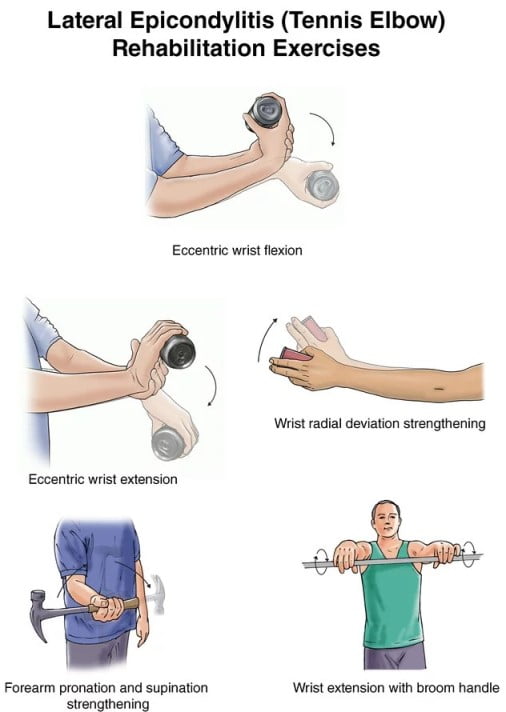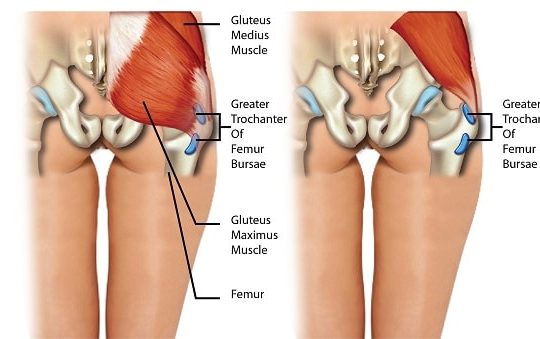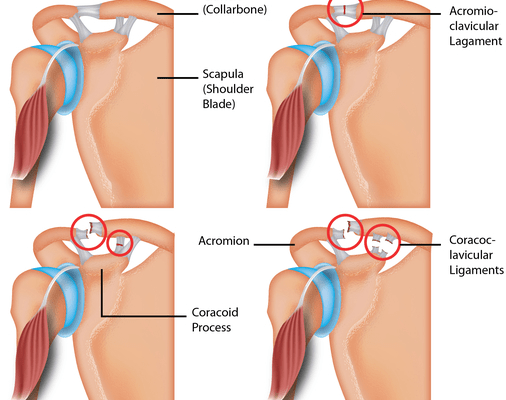What is tennis elbow?
Tennis elbow is an injury to a tendon in the elbow which causes pain and tenderness around the outside the elbow. It is also known as lateral epicondylitis.
Muscles and tendons in the forearm can become damaged from overuse, mainly in repetitive activities. Any activity involving the muscles that help in straightening the arm can cause damage to the structures (muscles and tendons) in the forearm. It is most common in carpenters and labourers and as the name suggests, tennis players.
What are the symptoms of tennis elbow?
The primary symptoms of tennis elbow usually come as pain and tenderness around the elbow, sometimes radiating into the forearm. Other symptoms of this injury include:
- Pain in the forearm when heavy lifting or simple tasks where lifting of objects above the elbow is required
- Pain in the upper forearm when holding or gripping an object
- Stiffness of the elbow in the morning
- Pain on the outer side of the elbow and tenderness (pain upon touching) on a prominent part of the bone on the outside of the elbow.
- Pain in the elbow when straightening the arm
There might also be a consistent, dull ache through the day. It is recommended to contact your GP or physiotherapist as soon as possible, if the condition affects your daily functions.
What are the risk factors and causes of tennis elbow?
Common risk factors of tennis elbow often include:
- Age – older people are at a higher risk
- Occupation – people who perform repetitive activities requiring arm movement such as carpentry, plumbing, bricklaying, butchers etc.
- Previous injury – if the area has been injured before there is a higher risk that tennis elbow can occur again without sufficient treatment.
If the arms and elbows are not used to certain activities, these can cause and occurrence of the injury. As tennis elbow is characterised by repetitive or excessive strain on the tendons in the elbow, it can be caused by any of the following:
- Playing tennis or similar sports such as javelin, shot put, badminton or discus
- Activities that require repetitive bending of the elbow e.g. playing a musical instrument, painting, plumbing, bricklaying etc.
- Sharp bang or knock of the elbow
Tennis players are said to suffer from the injury the most, it is believed that the repetitive nature of hitting tennis balls may have led to tiny tears in the forearm tendon at the elbow.
How is it diagnosed?
Tennis elbow is considered as an overuse injury and is usually diagnosed clinically with patient history and examination of the elbow.
X-rays and other types of imaging can also be used to include or exclude other conditions. It is generally a self-limiting condition but in some people, the symptoms may persist for 18 to 24 months and in some cases, even longer.
How to treat tennis elbow
Tennis elbow is usually referred to as a self-limiting condition, which means it usually heals on its own within time. Using the correct treatment however, can help relieve pain, control inflammation and promote healing. This generally helps to reduce the waiting time, whilst strengthening the region of the injury.
Self-treatment for tennis elbow
If the condition is still in its early stages and the pain is light, then your health specialist might recommend certain self-care measures to help assess it, these include:
- Rest – avoid any strenuous activity or lifting with the affected arm
- Ice – apply a cold compress to the area for 10-15 mins, three times a day
- Painkillers – paracetamol or ibuprofen may help ease mild pain and inflammation caused by tennis elbow.
- Activity modification – change in your technique, easing up or avoiding certain arm movements can also aid the recovery process
If the condition is reoccurring or deemed very painful/uncomfortable then your GP may refer you to a physiotherapist who may use therapy techniques such as massage and arm manipulation, to help relieve the pain and stiffness. Other forms of treatment available for tennis elbow include:
- Anti-inflammatory gels and patches
- Steroid injections
- Using an elbow strap or brace
- Shockwave therapy
- PRP injections
The majority of people with this injury will recover successfully using the above treatments. There are however, a small percentage that may require surgery especially if the condition hasn’t improved after 12 months of non-invasive treatments.
Studies have also shown that steroid injections may have harmful, long-term effects and are no longer recommended in most cases.
Exercises for tennis elbow prevention
It is important that anyone with tennis elbow is advised on how to cut down on activities that aggravate the condition as well as exercises that help to strengthen the tendons in the arm and elbow.
Strengthening the forearm muscles helps to increase the stability of the elbow joint and plays a big role in preventing future occurrences of tennis elbow. Competitive athletes can also be taught how to avoid recurrent episodes by decreasing the amount of playing time and using equipment appropriate to ability, body size, and muscular strength.
Exercises that can help to prevent the reccurence of this injury include:
- Eccentric wrist flexion – holding a can or bottle in the hand of the injured arm, use your other hand to bend your wrist upwards. Let go of your wrist and lower the weight slowly back down. Do 3 to 6 sets daily
- Eccentric wrist extension – similar to the wrist flexion hold a can or bottle in the injure arm with your arm facing down. Use your other arm to life your wrist up, then gently lower the hand back down

- Wrist extension with broom handle – hold a broom handle in both hands. Ensuring your arms are at shoulder level and keeping your elbows straight (palms down), roll the broom handle backward in your hand. Do 2 sets of 10
- Forearm pronation and supination – holding a can or hammer handle in the hand of the affected arm, bend your elbow 90 degrees slowly, alternative from left to right.. Slowly turn your hand so your palm is up and then down. Do 3 sets of 5
- Wrist radial deviation strengthening – stretch out the affected arm sideways with an item in hand such as a can or phone. Gently bend your wrist up with the thumb reaching toward the ceiling. Slowly lower to the starting position keeping the forearm still. Do 3 sets of 5
FAQs
Q. How long does it take for tennis elbow to heal?
A. Depending on the severity of the injury, tennis elbow can take
Q. Can tennis elbow get worse?
A. Tennis elbow is a self-limiting injury meaning, it should get better in time. The condition can get worse however if the individual continues to aggravate the injured arm and participate in sports or activities that cause further damage to the area.
Q. Do tennis elbow supports work?
A. Tennis elbow supports or braces are useful in alleviating pain in the affected area and can aid recovery. They usually work by compressing the upper forearm, absorbing the transmitted forces to the point of pain on the outside of the elbow.
Q. What is the difference between tennis elbow and golfers elbow?
A. Although both conditions affect the elbow, the main difference lies in the area of the elbow tendon that is inflamed (epicondylitis). Tennis elbow is an outer (lateral) elbow inflammation, whilst golfer’s elbow is inside (medial) elbow inflammation.
[trx_infobox style=”info” closeable=”yES” bg_color=”#F9F9F9″ top=”inherit” bottom=”inherit” left=”inherit” right=”inherit”]SOURCES
[1] Noteboom T, Cruver R, Keller J, Kellogg B, Nitz AJ. Tennis elbow: a review. Journal of Orthopaedic & Sports Physical Therapy. 1994; 19(6):357-366.
[2] Tosti R, Jennings J, Sewards M. Lateral epicondylitis of the elbow. The American journal of medicine. 2013, 126(4): 357.e1-357.e6.
[3] Allander E. Prevalence, incidence and remission rated of some common rheumatic diseases and syndromes. Scandinavian Journal of Rheumatology. 1974; 3:145-153.
[4] Maylack FH. Epidemiology of tennis, squash, and racquetball injuries. Clinical Sports Medicine. 1988; 7:233-243.[/trx_infobox]






